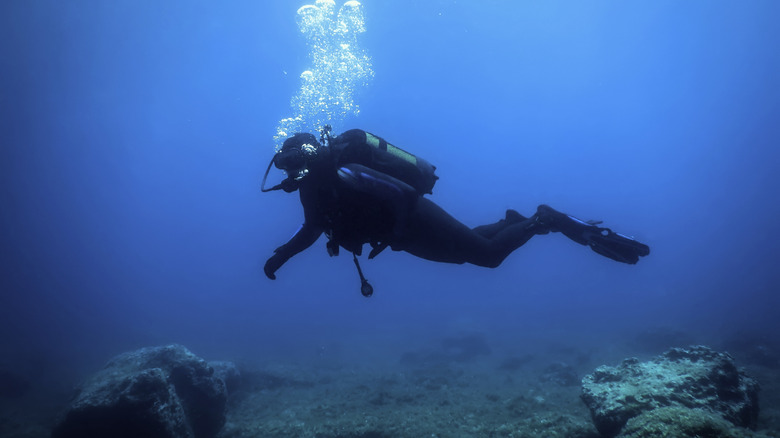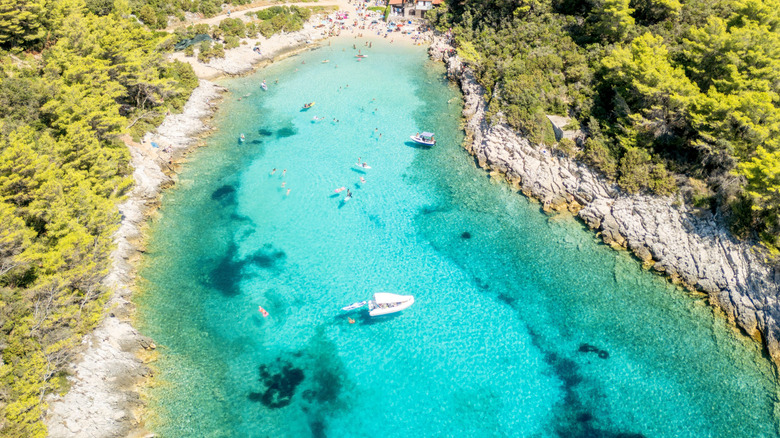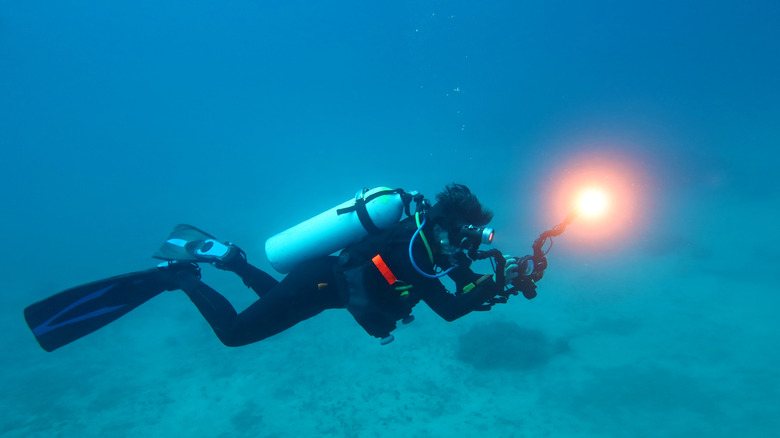How Archeologists Discovered An Ancient Road Underneath The Mediterranean Sea
With 71% of the Earth covered in water and an estimated 5% of its oceans explored, humans have only scratched the surface of the secrets buried beneath the sea. Among the things we've uncovered are sunken ships, buried treasures, ancient cities, and terrifying new sea life discoveries. Each has brought us new knowledge — and sometimes more questions — about our wide and wonderful world.
While deep-sea explorers go diving in search of new discoveries and answers to old questions in our mysterious waters, some findings are unintentional. One mind-blowing archaeological discovery found by mistake occurred in 2021 off the coast of southern Croatia. Mate Parica, an archaeologist from the University of Zadar, was scanning the Mediterranean Sea by satellite when he found signs of man-made structures stretching along the bottom of the ocean floor. Upon further exploration, these mysterious structures were revealed to be part of an ancient settlement, traversed by the stone remains of a 7,000-year-old road.
The road to an ancient underwater settlement
After spotting the unidentified objects in the satellite image, Mate Parica and a colleague dove down to investigate. About 16 feet (5 meters) beneath the surface of the Mediterranean's Adriatic Sea, they discovered evidence of what they believed to be an ancient settlement from the Stone Age — specifically from the Neolithic period. The archaeologists found a prehistoric roadway submerged in mud, and their excavation uncovered remnants of stone walls, ancient tools, bone artifacts, ceramic pottery, and flint knives. All of these discoveries point to signs of ancient civilization, and they were miraculously preserved, sheltered from the waves and elements by surrounding islands.
"The fortunate thing is that this area, unlike most parts of the Mediterranean, is safe from big waves as many islands protect the coast," Parica told Reuters. "That certainly helped preserve the site from natural destruction." Speaking to Live Science, he said the pottery led them to deduce that the settlement and its ancient road were linked to the prehistoric maritime culture of Hvar, dating back to between 3500 B.C. and 2500 B.C. Using radiocarbon dating technology to test wood found at the site, archaeologists dated the settlement back to around 4900 B.C.
Unveiling the secrets of the deep
Though the discovery of the ancient settlement was made in 2021, its findings weren't announced until 2023. In a Facebook statement on May 6, the University of Zadar — whose team had joined Parica in his explorations — wrote that an ancient road had been discovered. "[It connected] the submerged prehistoric settlement of Hvaric culture with the coast of the island Korčula," and people had walked on it nearly 7,000 years ago. The statement also revealed that the road was made of stone plates about 4 meters (13 feet) wide, forming a narrow strip that once connected the artificial island to the mainland. As Patrica pointed out, it was a rare discovery because Neolithic settlements are typically found in secluded caves.
Along with the Neolithic artifacts recovered from the underwater settlement, the discovery of the ancient road has paved a path to understanding one of the Neolithic Era's oldest known cultures. Most notably, it suggests the Hvaric community wasn't as isolated as previously believed, given its connection to the shore (via Indian Defence Review). Though accidental, the 7,000-year-old discovery has unlocked one more secret buried in the vast and endless sea.


